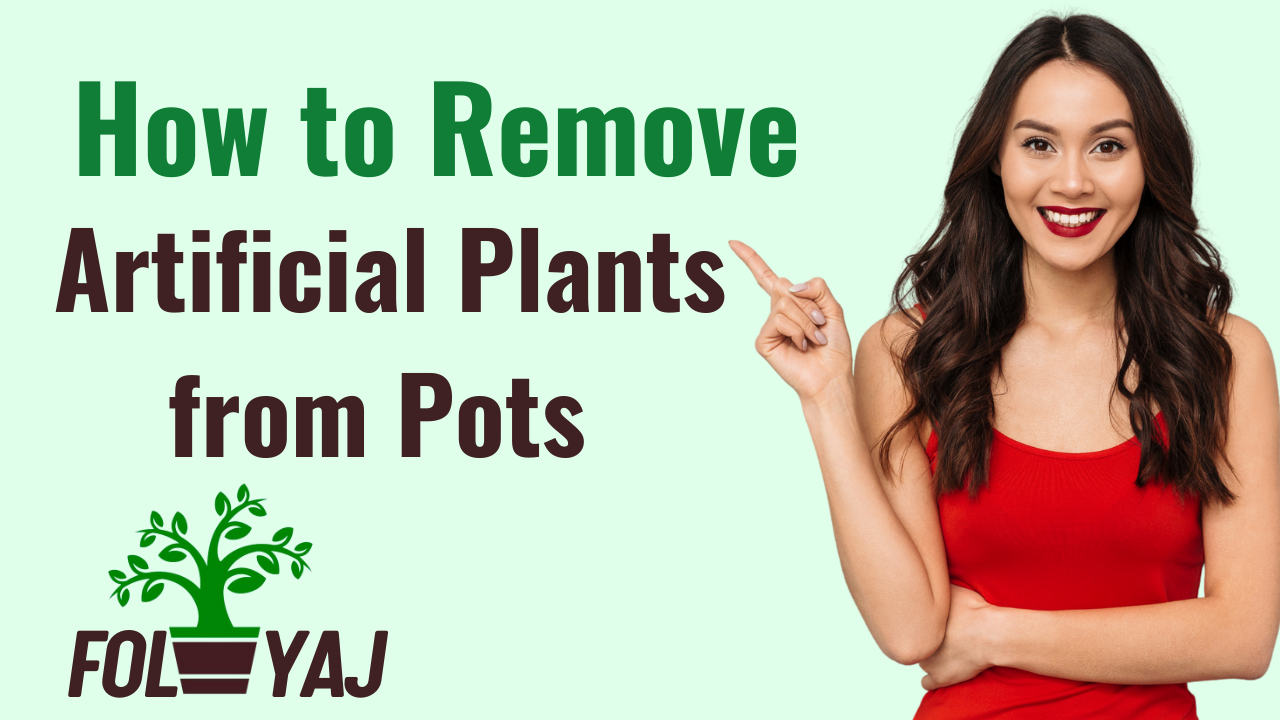Artificial plants are a wonderful addition to any home, offering the beauty of nature without the hassle of maintenance. However, there may come a time when you need to remove artificial plants from their pots—whether to replace the pot, clean the plants, or switch up your decor. This guide will walk you through the steps to safely and effectively remove artificial plants from pots without damaging them.
Why Remove Artificial Plants from Pots?
Understanding the reasons for removing artificial plants from pots can help you better plan and execute the process.
Reasons to Remove Artificial Plants from Pots
-
Cleaning: Over time, dust and dirt can accumulate on artificial plants and pots. Removing the plants allows for thorough cleaning.
-
Repotting: Changing the pot can refresh the look of your decor or replace a damaged container.
-
Rearranging: You may want to switch up your decor by moving plants to different locations or arrangements.
-
Storage: If you need to store the plants, removing them from their pots can save space and prevent damage.
For those looking to expand their collection, consider exploring and purchasing small plastic flowers to complement your existing decor.
Materials Needed to Remove Artificial Plants from Pots
Before starting the removal process, gather all the necessary materials to ensure a smooth and damage-free experience.
Essential Supplies
-
Gloves: To protect your hands from any sharp edges or rough surfaces.
-
Small Trowel or Spatula: For loosening the plant from the pot.
-
Soft Brush: To clean any debris from the plant.
-
Plastic Bags or Sheets: To catch any loose debris or dirt.
-
Water and Mild Detergent: For cleaning the plant and pot.
Steps to Remove Artificial Plants from Pots
Follow these steps to safely and effectively remove artificial plants from their pots.
1. Prepare Your Workspace
Start by setting up a clean and spacious workspace. Lay down plastic bags or sheets to catch any debris or dirt that may fall during the process.
2. Inspect the Plant and Pot
Carefully inspect the plant and pot to understand how the plant is secured. Some artificial plants are glued or wired into their pots, while others may simply be placed in with filler materials like foam or rocks.
3. Loosen the Plant
Use a small trowel or spatula to gently loosen the plant from the pot. Insert the tool between the plant base and the pot edge, carefully prying around the circumference to loosen any adhesive or filler material.
-
Glued Plants: If the plant is glued, apply gentle pressure to break the bond. Be cautious not to apply too much force, as this can damage the plant.
-
Foam or Filler Material: If the plant is secured with foam or filler, carefully remove the filler material to free the plant.
4. Remove the Plant
Once the plant is sufficiently loosened, carefully lift it from the pot. If the plant is wired, you may need to cut the wires using scissors or wire cutters.
5. Clean the Plant and Pot
After removing the plant, use a soft brush to clean any debris from the plant. If needed, gently wash the plant with water and mild detergent, then allow it to dry completely. Clean the pot as well, removing any remaining adhesive, filler material, or dirt.
For new and attractive options to replace your old plants, you can buy artificial plants to refresh your decor.
Tips for Safely Removing Artificial Plants from Pots
To ensure the removal process goes smoothly and without damage, follow these helpful tips:
Take Your Time
Rushing the removal process can lead to damage. Take your time to carefully loosen and remove the plant from the pot.
Use Gentle Pressure
Apply gentle and even pressure when loosening the plant. Avoid using excessive force, which can break the plant or pot.
Protect the Plant
Handle the plant with care to prevent bending or breaking the stems and leaves. Use gloves to protect your hands and the plant.
Creative Ideas for Repurposing Removed Artificial Plants
Once you’ve successfully removed your artificial plants from their pots, consider these creative ideas for repurposing them:
Create New Arrangements
Mix and match your artificial plants to create new arrangements and displays. Combine different sizes and types of plants for a unique and dynamic look.
DIY Projects
Use the removed plants for various DIY projects, such as wreaths, garlands, or decorative wall art. This is a great way to repurpose old plants and add a personal touch to your decor.
Seasonal Decor
Switch out your plants to match the seasons or holidays. Use different pots, colors, and accessories to create festive displays.
Advanced Techniques for Removing Stubborn Plants
Sometimes, artificial plants can be particularly stubborn to remove. Here are some advanced techniques to help with more challenging removals:
Heat Application
If the plant is heavily glued, applying a small amount of heat can soften the adhesive. Use a hairdryer on a low setting to gently warm the glue, making it easier to loosen.
Solvent Use
For particularly tough adhesives, a mild solvent can help break down the glue. Apply a small amount of solvent to the adhesive area and let it sit for a few minutes before attempting to loosen the plant again. Be sure to use a solvent that is safe for both the plant and pot materials.
Cutting and Pruning
If all else fails, consider carefully cutting or pruning parts of the plant to facilitate removal. Use this method as a last resort to avoid unnecessary damage.
Maintaining Your Artificial Plants
Proper maintenance can extend the life of your artificial plants and keep them looking fresh and vibrant.
Regular Dusting
Dust your artificial plants regularly with a soft, dry cloth or brush to remove dust and debris. This simple step can keep them looking clean and new.
Occasional Washing
Every few months, gently wash your artificial plants with water and mild detergent to remove any built-up dirt. Rinse thoroughly and allow them to dry completely before displaying them again.
Avoid Direct Sunlight
Prolonged exposure to direct sunlight can cause artificial plants to fade. Place your plants in areas with indirect light to maintain their color and vibrancy.
Enhancing Your Decor with Artificial Plants
Artificial plants can enhance various areas of your home, bringing a touch of nature to any space.
Living Room Decor
Use artificial plants to add greenery to your living room. Place them on shelves, coffee tables, or as part of a larger arrangement to create a lush, inviting atmosphere.
Office Space
Add a touch of nature to your workspace with artificial plants. They can help create a calming and productive environment without the need for maintenance.
Bathroom Decor
Artificial plants are perfect for bathrooms, as they are unaffected by humidity and low light conditions. Place them on countertops, shelves, or windowsills to add a touch of green to your bathroom.
Conclusion
Removing artificial plants from pots is a straightforward process that can breathe new life into your decor. By following the steps outlined in this guide, you can safely and effectively remove artificial plants from their pots without causing damage. Whether you’re cleaning, repotting, or rearranging, this skill allows you to maintain and enhance your artificial plant collection with ease.
Ready to refresh your decor? Explore a wide range of small plastic flowers and buy artificial plants to find the perfect additions for your home. With a bit of creativity and care, you can transform your space with beautiful, low-maintenance artificial plants. Happy decorating!












